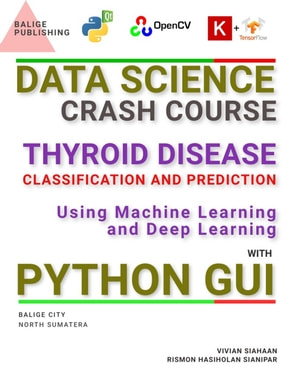

Most ebook files are in PDF format, so you can easily read them using various software such as Foxit Reader or directly on the Google Chrome browser.
Some ebook files are released by publishers in other formats such as .awz, .mobi, .epub, .fb2, etc. You may need to install specific software to read these formats on mobile/PC, such as Calibre.
Please read the tutorial at this link: https://ebookbell.com/faq
We offer FREE conversion to the popular formats you request; however, this may take some time. Therefore, right after payment, please email us, and we will try to provide the service as quickly as possible.
For some exceptional file formats or broken links (if any), please refrain from opening any disputes. Instead, email us first, and we will try to assist within a maximum of 6 hours.
EbookBell Team

0.0
0 reviewsThyroid disease is a prevalent condition that affects the thyroid gland, leading to various health issues. In this session of the Data Science Crash Course, we will explore the classification and prediction of thyroid disease using machine learning and deep learning techniques, all implemented with the power of Python and a user-friendly GUI built with PyQt.
We will start by conducting data exploration on a comprehensive dataset containing relevant features and thyroid disease labels. Through analysis and pattern recognition, we will gain insights into the underlying factors contributing to thyroid disease.
Next, we will delve into the machine learning phase, where we will implement popular algorithms including Support Vector, Logistic Regression, K-Nearest Neighbors (KNN), Decision Tree, Random Forest, Gradient Boosting, Light Gradient Boosting, Naive Bayes, Adaboost, Extreme Gradient Boosting, and Multi-Layer Perceptron. These models will be trained using different preprocessing techniques, including raw data, normalization, and standardization, to evaluate their performance and accuracy. We train each model on the training dataset and evaluate its performance using appropriate metrics such as accuracy, precision, recall, and F1-score. This helps us assess how well the models can predict stroke based on the given features. To optimize the models' performance, we perform hyperparameter tuning using techniques like grid search or randomized search. This involves systematically exploring different combinations of hyperparameters to find the best configuration for each model. After training and tuning the models, we save them to disk using joblib. This allows us to reuse the trained models for future predictions without having to train them again.
Moving beyond traditional machine learning, we will build an artificial neural network (ANN) using TensorFlow. This ANN will capture complex relationships within the data and provide accurate predictions of thyroid